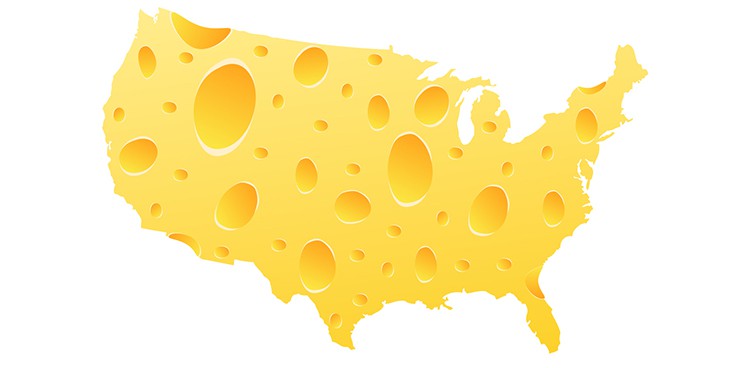
I’ve never felt comfortable calling American cheese by its name. In a country with a strong diversity of delicious curds, labeling those brightly colored processed squares the all-encompassing “American” has always felt off-putting. In my blog series, Pure Unprocessed AmericanI aim to discover everything the United States has to offer so I can finally find out what “American” cheese really is.
Brief historical overview: American cheese started with whatever wheels were whisked away on the pilgrimage from Europe. Upon arrival in the New World there wasn’t an industry or even a foothold for cheese outside of the family cow. Cheese was built up over the next few centuries, never really taking off until 1851 and the opening of the first commercial cheese factory in Oneida County, N.Y. This was also when a surge of immigrants began arriving in America, settling across the Northeast—from Connecticut to Vermont—and bringing their own cheesemaking styles with them. Over the next century, these styles slowly developed until a boom in the early 1980s led to a large-scale increase in the production of US artisan cheeses. This cheese revolution turned the US into the biggest producer of cheeses worldwide, both artisanal and commercial. Wisconsin alone makes up for around a quarter of cheese produced in America—almost 3 million pounds.
What I aim to do with this blog series is detail what makes up the wide spread of real American cheeses. I’ll be looking into the practical history of cheese in the States, reporting on official state cheeses and notable cheesemongers, and how different environments, from the Rockies to the Redwoods, affect the milk and the means for making cheese.
Let’s discover the true American cheese!
Feature Photo Credit: “american map made of cheese” by Andrei Marincas | Shutterstock



